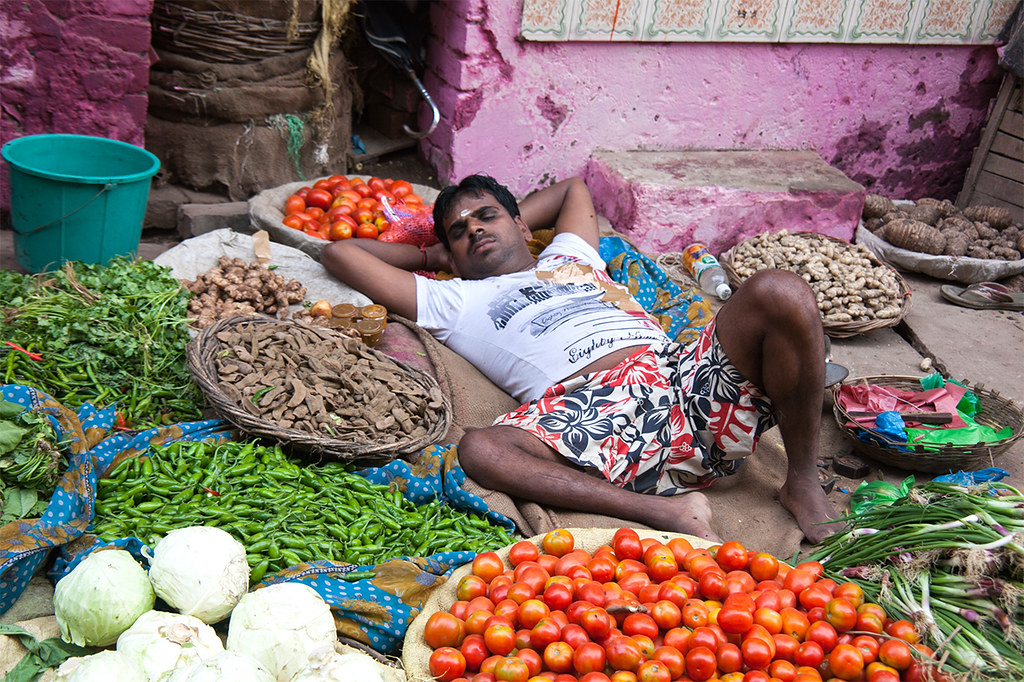Authors: Urvi Desai | Ramya Ramesh | Bhavin Shukla || FCA
For women, the notion of ‘occupying the city’, that is, to be able to spend some time there and dwell in it is not an everyday practice of doing nothing, but one that necessitates the consumption or production – of an event, product or service.
The 2010 movie Eat, Pray, Love popularized the Italian saying, ‘Dolce far niente’, literally meaning ‘sweet doing nothing’. A painting by the same name shows a woman relaxing on a couch, presumably in her house, during the afternoon time. Her posture, her expression and the setting portray a certain sense of contemplation and silence- what we might call ‘me time’ today. According to Bertrand Russel, leisure is an activity that is important for all humans. It was leisure that cultivated the arts, fostered sciences, theorized philosophies, refined social relations etc., and it is leisure that allows us to reflect on our actions, which in turn makes us better humans. And yet, a hundred and forty-five years after the painting, the Indian woman is still able to relate to this longing for doing nothing. She probably shares this desire for leisure with several women across the globe.

Why do women yearn to do nothing? What are their options for a place of leisure that is outside the confines of their domestic realm and out of sight of the household work that needs to be done yet?
What does it mean for a woman to be seen ‘loitering’ around on streets and in public spaces for no particular purpose? Is it possible for a woman to do so as an everyday act of living in the city?
Even a cursory observation of the cityscape reveals a high number and concentration of men everywhere – on streets, at corners and food stalls, outside buildings and shops, and in & on vehicles. This is a clear indication that for all intents and purposes, men own the city, occupy it and move about it freely at will.
But for women, the domestic space becomes a hard boundary, beyond which a woman is in the ‘public’ eye, and is expected to behave in a certain way.
The inability of women to occupy the city as freely as men is not only about safety and toilets, although they are, but of course, of utmost importance. It is also about creating spaces that are free of judgement, free of objectification of women, and free of the male gaze. Safety is not determined by the physical characteristics of spaces alone but is a feeling of comfort that comes from a social construct and structure of society.
A woman may be in a well-lit and visible public space, and yet feel uncomfortable because she cannot be herself, freely and wholly – un-selfconsciously.
For example, male vegetable vendors can take an afternoon siesta sleeping on a cart, parked under the shade of a tree. Women, however, can do so only if the husband or another adult male is with her, keeping a watchful eye.


Navigating the Indian city is a complex activity for women, not because they lack the know-how, but because it is an act of daily drudgery. To most women, the city is no less than a battlefield, where every day is a fight to overcome social and physical hurdles. Shilpa Phadke, Sameera Khan and Shilpa Ranade, in their book ‘Why Loiter?’, bring out the invisible ‘lines of control’ that determine women’s behaviour in public spaces. They elaborate on how women’s minds are constantly preoccupied with trying to escape being stared at, judged or questioned, especially when alone in a public space.
The very thought of having to everytime plan the day before stepping out of the house is so burdensome that women end up ‘maximizing’ their time outside by making it ‘purposeful’. In the process, they are robbed of the joy of occupying the city i.e. experiencing the city without purpose, for leisure, or just ‘being’ in it.
In recent years, improved mobility due to the availability of private transport vehicles and better public transport facilities has partially aided women from different backgrounds to challenge some of the barriers and exercise their agency to occupy the city. To some who can afford it, the private car becomes a safe haven, avoiding confrontation with the male gaze. To others, it is the two-wheeler which is a source of freedom, although more vulnerable than the car.
The two-wheeled, gearless scooter indeed revolutionized private transport for women in the mid-1900s and continues to be promoted as a tool for freedom even today.
A picture of a design for the proposed Girnar scooter from 1969 by the Government of Gujarat, shows a young woman riding it, a demographic that vehicle manufacturers still strive to appeal to in India. Advertisements like the Hero Pleasure tagline “Why should boys have all the fun?” take this one step further by describing the vehicle not only as a form of emancipation from the controlled domestic space but also as a means to leisure and adventure. Unlike the bicycle that is known to have empowered American women, it is the moped that is believed to have given Indian women a sense of freedom and self-confidence.
The journey of a female protagonist in Indian popular culture is mostly driven by the movement of a woman from a domestic space to a public space, both physical and social.


According to a study by Women in Mobility, a German NGO, most women have high demands on mobility and rarely have access to a car. They make a number of shorter trips combining several tasks on a daily basis. This makes public transport unsuitable for their mobility needs, which is why they often travel multimodally. Uber understood this demand, and in 2017 launched a feature to add stops. Although marketed as ‘pick up a friend’, or ‘carry a bottle of booze to a party’, this feature goes a long way to allow for shortstops for women, who also make up a large segment of Uber’s customers. For those who commute by foot or by public transport, the streets, the bus and the Metrorail become spaces of refuge, but many times, of discomfort, too. Maintaining a heightened sense of body awareness during these journeys becomes a habit, which is evident from the positions women choose to occupy while waiting for a bus and by their body language while walking on the street or sitting on the Metrorail.
This constant need for being on guard does not allow a woman to relax and can instead cause stress and mental exhaustion.


For women, the notion of ‘occupying the city’, that is, to be able to spend some time there and dwell in it is not an everyday practice of doing nothing, but one that necessitates the consumption or production – of an event, product or service. Passive recreation, just spending time with one’s thoughts is an ill-afforded luxury in the Indian city, totally at odds with Bertrand Russell’s notion of leisure as a fundamental need and an important activity for every individual.
We have forgotten and learnt to disregard that traditionally, the streets of the Indian city are its key public spaces, where ‘recreation’ becomes a passive everyday practice, rather than spaces that are planned with the intention of ‘having fun’.
Our collective cultural association with parks and gardens is not the same as that of the European city dweller. The innumerable ‘chowks’ of our cities are our daily spaces of leisure, connected as they are to the houses through slivers of thresholds. Designated recreational spaces do not cater to leisure as much as, let’s say, a street bench under the shade of a large tree on a quiet residential street where one can rest for a while and watch the world go by before continuing one’s journey.
Formal public spaces work as recreation spaces only on special occasions rather than daily, largely because most women do not have a designated time for recreation; it happens between activities.
For example, one makes time for a 15-minute quick read or a leisurely cup of tea or a short break talking to neighbours on the street as they pass by. These activities take place on street edges, the immediate public realm. Traditional Indian houses have spaces like ‘otlas’, which connect the domestic space to the street. Houses are parts of tightly knit residential clusters where the units open to narrow, neighbourhood streets rather than wide commercial streets. With modern city design favouring large, gated, private residential clusters, the layers of thresholds between the domestic and public space have now increased. Women have to traverse these multiple thresholds in order to be released from the mental bind of the domestic space and step into the city.
There is a need to re-examine the relationship between residential clusters and the city streets – its open public spaces – and reinvent the spaces where women can enjoy the sweet doing nothing.
In the wake of women’s rights movements and feminist movements, there is an emerging landscape of inclusive public spaces. As noted earlier, public transportation, care for safety, and provision of facilities such as toilets, etc are some initiatives that are beginning to encourage women to participate in urban public life. Some women’s groups/ NGOs have begun organizing ‘meet to sleep’ activities in parks across several cities, thereby exercising their agency to reclaim public space. While it is promising that empowered women are empowering more women, a real transformation can be further catalyzed by sensitively designing the everyday spaces between homes and workplaces or homes and public transport stops.
Claiming streets as public spaces by all urban people is another urban socio-spatial phenomenon with a promise of liberating women from the boundaries of domestic space. On weekends, people of Surat in Gujarat occupy the wide footpaths of University Road and Dumas Road to celebrate birthdays or festivals, eat food and spend the evening together. Large groups of families or friends bring picnic baskets and games to spend a leisurely 2-4 hours on these road medians, often lingering on until late at night. This unique practice includes men and women of all ages and one also sometimes finds groups of only women partaking in the same experience.
These common practices of an entire city have a powerful potential to normalise the presence of women on public streets and their lingering or spending leisure time therein without a judgemental eye. They can expand women’s choices in the pursuit of idleness.


Sources (Images)
Fig 1. Dolce Far Niente by John William Waterhouse – Famous Art – Handmade Oil Painting on Canvas via artworkonly.com
Fig 2. Dick Verton via Flickr
Fig 3. Robert Eklund via Unsplash
Fig 4. M P Ranjan via Design for India
Fig 5. Hero Pleasure via Twitter
Fig 6. PradeepGaurs via Shutterstock
Fig 7. Shutterstock
Fig 8. Women in India Are Sleeping in Parks to Reclaim Their Right to Public Spaces by Shahana Yasmin, Vagabomb
Fig 9. SURATFIRST







